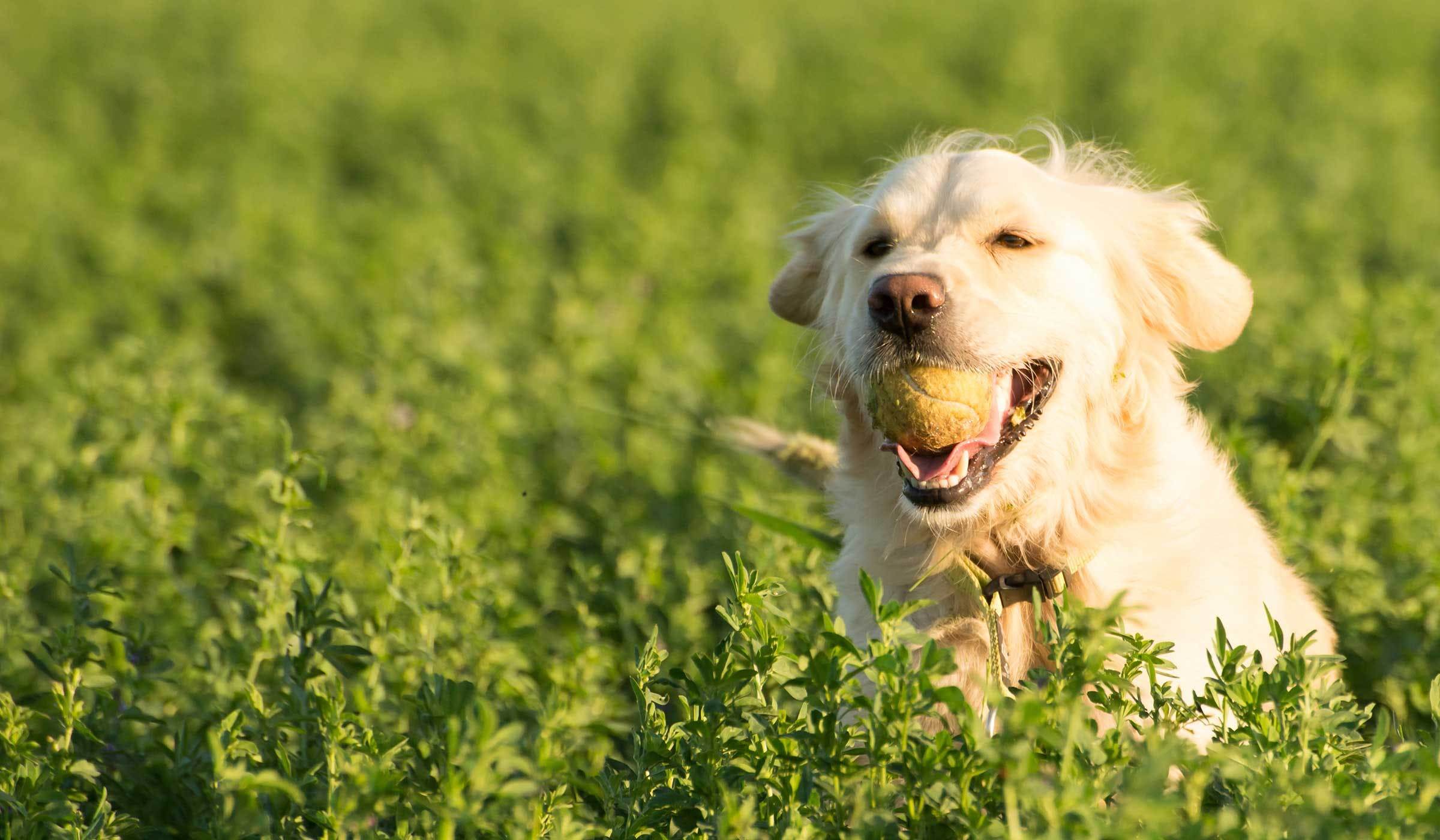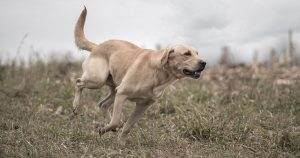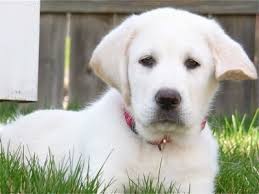Compared to other animals, dogs are much smarter. They have agility, a strong sense of smell, good sight, and they are very loyal to their master. In daily life, we often see them guarding and protecting properties or houses. However, many people don’t know one fact about dogs that they are also very good hunters.
Even these days many people do make dogs their companion at the time of hunting. At the time of hunting, these dogs bring back the wounded animal or bird to the master. They can go anywhere and do their jobs without any complaints. This ability is known as retrieving. With proper training, a retriever dog can easily do this task on his master’s signal.
What is Retriever?
Retriever is a special breed of dogs, which are used for hunting small animals and birds. These dogs are very energetic and agile. Most of them have a thick coat that works as a water-resistant cover and protect them from extreme cold. They are also expert swimmers and they are comfortable both on the ground and water. These dogs are famous for their hunting skill. For this reason, many people call them gun-dog.
Due to their high agility, these dogs can go anywhere and retrieve birds or other prey when gun down by a hunter. Even though from appearance these dogs may look ferocious, but they are very cool. When trained well, these dogs wait for their master’s command before doing any activity. These dogs also have soft-mouth and they can hold the pray in their mouth without causing much damage.
Recommended Gears for retriever training
Many people believe that retriever dogs are bona fide hunters from birth. However, this myth is not true. These dogs need proper training to learn the retrieve process. The trainer needs to follow a strict regime to train the dog. Here are a few gears that can help the training process. Most professional dog trainers use these gears to train retriever dogs.
- Check Cord: One aspect is very common in all young dogs that they always try to run away when free. It is quite problematic at the time of training. The long length of the check cord gives the dog enough freedom, but it also prevents it to run away. Before starting the training process the trainer must have this cord unless he is willing to run behind the dog all day long. Try to buy a check cord, which is long in length and lightweight.
- E-Collar: The risk of runaway always present with every dog, even with train dogs. The E-collar is a digital device, which can mitigate this risk a lot. Most of these collars are equipped with GPS. They send a signal to the receiver and help the trainer find the dog. These collars are water-resistant and even work in the jungle area.
- Heeling stick: For any dog, the first stage of training is obedience. The dog won’t learn anything unless it listens to its trainer. The heeling stick helps the trainer get this objective. It can help the dog understand the correct sitting posture. The dog learns to get in fetching posture near the heel of the trainer. It helps the retriever get in go position for fetch.
- Whistle: Communication is a very important aspect of retrieve training. Always yelling on the dog is not an effective solution. It put lots of strain on the throat. For this reason, it is advised to choose a whistle for giving the command. Just make sure the whistle has a distinctive sound and it can be heard from a long distance.
- Bumper: It is a mock-up of a dead or injured animal. The bumper evokes the hunting sensation in the dog and encourages it to fetch. There are multiple types of bumper available in the market. Some of them are made of canvas and plastic. For the initial period of training, it is better to use a bumper made out of durable material.
- Scent: For advance retrieve training many people use it. It mimics the odour of animals and birds. In the wild, the dog learns to find its prey by their scent. Most scent available in the market is synthetic and does not cause any harm to the dog. However, these scents are costly and only recommended for advance retrieve training only.
- Treat pack: When someone does something good, they deserve some prize. For a dog, it is a tasty treat. It motivates and encourages the dog to repeat the task. For this reason, at the time of training always carry a treat pack. The dog quickly becomes obedient, when they get good treatment from their trainer.
Basic Step by Step Retriever training
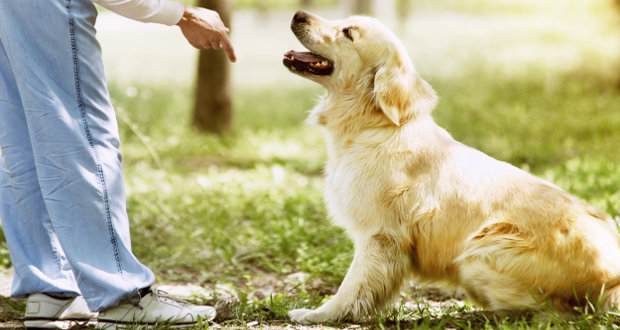
Just like a child the dog also takes time to learn new things. Some dogs are smarter and learn new tricks easily, and some dogs take a little bit more time. The trainer should never hurry the training process. Instead, taking a step by step method can deliver a better result.
- Sit: Even though many people do not emphasize it, but sitting straight is an important posture for the dog. In this posture, the dog remains calm and listens to his master. Therefore, the first duty of the trainer is to teach the dog in a sitting position. The dog should never stay upfront or in the back of the trainer. It is recommended to use a heeling stick to teach the dog this trick. It is a first step, which will create a bond between the dog and the trainer.
- Chase: The next step of retriever training is the chase. Even though it is an instinct of every dog, but many times they don’t know what to chase. For this reason, use a colourful bumper. At first, put the dog in a sitting position, then throw the bumper further away, then release the dog and give the command to chase the bumper. Make sure the dog only goes when given a command to go. It is the trade of a retriever how good it is in chasing the target.
- Return: After completing the successful chasing, the dog has to return to the trainer. The dog needs to understand the basic part of the game. After the dog successfully grabs the bumper, signal it to come back by making a whistling noise. In the beginning, many dogs refuse to come back. Instead, they prefer to chew the bumper. For these types of dogs, use the check cord and pull the check cord to bring the dog back. After returning give it treats as a reward. It will encourage the dog to return in the future.
- Release: The next step of the retriever training process is release. In this step, the dog needs to bring back the bumper and leave go of it to the trainer. In the initial stage, many dogs refuse to do it. They think the bumper is a chew toy and they love to chew it more. For this type of instance use the treat to get the bumper out of the dog’s mouth. Take a piece of a treat to the dog’s nose. When it opens his mouth to grab it, take the bumper out of his mouth.
Advanced Retriever training
For most house pets, the basic retrieve training is enough. But it is not enough for those retrievers who meant to be a hunter. They need special advance training, so they can play an effective role at the time of hunting. Here are some advanced training courses, which can help the dog become more effective at the time of hunting.
- Swimming: In the world, most hunting places are close to the water body. At the time most birds and animals often fall in these water bodies. A retriever dog that knows swimming can be very helpful in these times. For this reason, giving the dog a swimming lesson is a must. At first, make the dog familiar with shallow water. When it gets comfortable, take it to deep water and let it swim. After a couple of days of swimming, throw the bumper in water and let it retrieve from there.
- Blind retrieve: At the time of hunting, many dogs aren’t able to see where the animal or bird has fallen. At this time it needs to depend on the handler’s signal. This process is called a blind retrieve. To master this technique the dog needs to learn the hand signal of the trainer and move according to it. The T-drill and hand casting is an essential training method to teach the dog blind retrieve. Once mastered, the dog can move in any direction by following the handler’s instructions.
- Hunt by smell: Compared to other dogs a retriever dog has a higher sense of smell. Thanks to its strong sniffing power it can detect and hunt animals and birds easily. Many hunters take advantage of this capability and train their retriever to hunt by smell. For the training purpose, trainers often use synthetic animal and bird scent. These scents are non-toxic and do not cause any problem to the dog.
When is the best time to start Retriever training?
Many people wonder when the right time to start retriever training is. The age of a dog plays a crucial role in the training process. In recent scientific research, it has been established that every dog learns new tricks quickly when they are young. On the other hand, old dogs are stubborn and don’t like to do much physical activity at all.
For this reason, start retriever training when the dog is at an early age. Most retriever dogs above the age of 10 to 12 weeks are physically prepared for training. At this age, the owner can start basic training. For advanced training, the dog needs to learn basic training first and then move on to an advanced course.
Challenges with retriever training
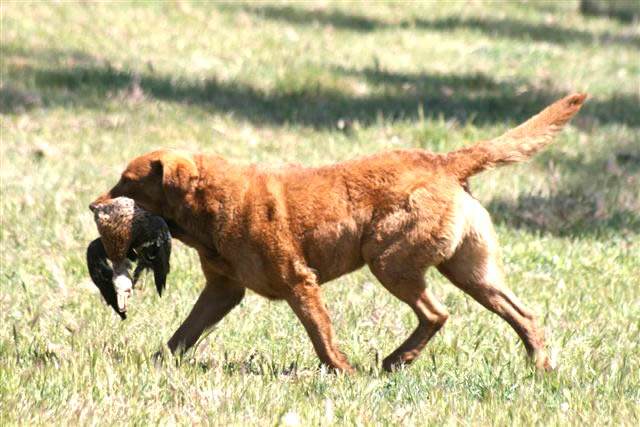
Just like humans, dogs also have different types of personalities. For this reason, one successful training method on one dog may not work on another dog. The trainer needs to understand the personality of the dog and treat it the right way. Being too strict or too relaxing attitude may deliver counterproductive results. Here are some common challenges most trainers face at the time of the retriever training session.
- Restlessness in the dog: It is a common problem with young dogs. Compared to an older dog a young dog is much more energetic. Therefore, sitting down for quite a time can make him irritating. The dog expresses his joy by jumping around all day long. For these types of dogs, take a subtle approach. Use a tighter leash and bring the dog near your heel and hold it there for a minute. Then release the dog and give him some treat. For better guidance, a heeling stick can be used for this occasion. Regular repeats of this drill take away restlessness and bring obedience to the dog.
- Not showing interest: There can be multiple reasons behind this. First of all the dog might be suffering from any illness and don’t have the mood to play. In such a case, check the dog thoroughly and take him to a veterinary if necessary. If the dog is not sick, then it might be bored with existing games. Alternate each drill in different sequences. To encourage the dog more, buy new dog toys or bumper. A new bumper with different colours will evoke the dog to get more active. Stress fatigue also might be the reason behind it. Give the dog proper rest and reduce the time of activity.
- Not returning: It is a common problem for those dogs that spend most of their time in captivity. Whenever they get a chance they run away and develop a stubborn personality. For these types of dogs, the trainer can use E-collar or long leash. If the training ground is big, then use a check-cord. Whenever the dog refuses to come back pull the check-cord and bring back the dog to its place. It is also a good idea to keep these types of dogs in open space. It will change their habit and they will always return when the owner calls the dog back.
- The dog is not giving back the bumper: At the time of training, most trainers face this problem. No matter what the dog loves the bumper so much that it starts chewing it. This problem commonly occurs at the teething time. At this time dogs start developing teeth and it causes a sensation in their jaw. However, this habit naturally goes away when the dog becomes an adult. If an adult dog shows this type of behaviour, then it could mean the dog is suffering from any tooth related problems. In such cases take the dog to the veterinary for medical help.
- The dog not acting properly: At the advanced stage of training, many dogs act confusing. It seems they do not understand any command and start acting dumb. Sometimes even smart dogs show this type of behaviour. This behaviour is commonly known as training fatigue and happens with the rapid pace of training. At this time the trainer needs to slow down and reduce the number of activities. Instead of trying multiple tasks in a day, focus on one task at a time. It will give the dog extra time to master every drill.
Positively reinforced retrieve training
Many people take harsh methods to teach their dog tricks quickly. They often beat the dogs, when it fails to perform any drill correctly. Many people also pull the ear of their dog for the same reason. It is a negative approach and most of the time delivers negative results. After a while, the dog gets frustrated with its owner and it can bite the owner some time.
Instead of punishing the dog all time, train it with positive reinforcement. Treat it like a companion and try to understand its behaviour. Give the dog the necessary love and care all the time. Always give the dog treat whenever it completes a task. Instead of confining the dog in close space, take it outside for a stroll. Spend a good amount of time with the dog and play with it whenever possible. It is a proven fact, that with positive reinforcement train dogs learn things quickly and become very obedient too.
Many people also train their dogs at the wrong time. Most dogs remain active in the early morning and evening. It is the best time for training. At this time, the senses of the dog remain hyperactive and they listen to every command.
Conclusion
Compared to other dogs, the dog of the retriever breed is much smarter. They not only have an agile body, but they also contain a smart mind. The big difference between a retriever and other dogs is that the retrievers are born hunters. For centuries they are working beside humans as a hunter. As a result, these dogs have retrieving capability in their gene and they learn new tricks quickly.
However, the trainer needs to devote the appropriate time behind the dog to train it. Otherwise, the dogs won’t learn anything about themselves. The trainer needs to let the dog practice every drill multiple times a day. Only then the dog will be obedient and do the retrieving activity successfully. Love, care, and positive reinforcement are the three essential elements of retriever training. Every trainer needs to have patience and they need to handle the dog with care.
Table of Contents
